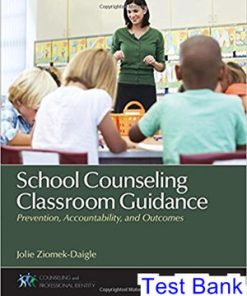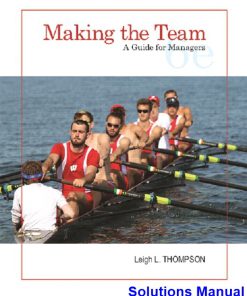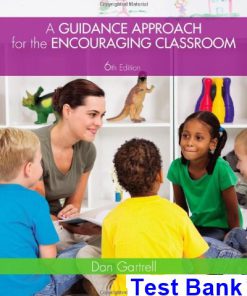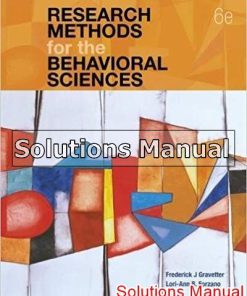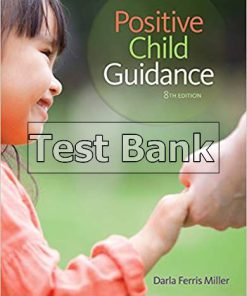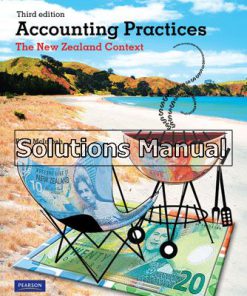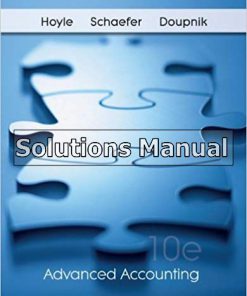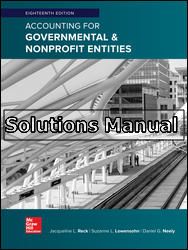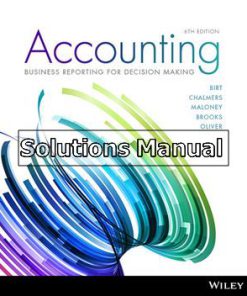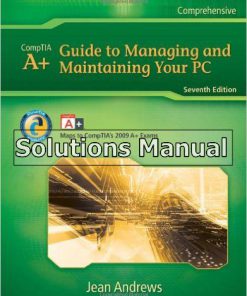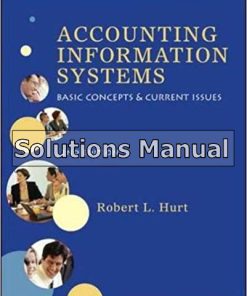Guidance Approach for the Encouraging Classroom 6th Edition Dan Gartrell Solutions Manual
$50.00 Original price was: $50.00.$26.50Current price is: $26.50.
Guidance Approach for the Encouraging Classroom 6th Edition Dan Gartrell Solutions Manual.
This is completed downloadable of Guidance Approach for the Encouraging Classroom 6th Edition Dan Gartrell Solutions Manual
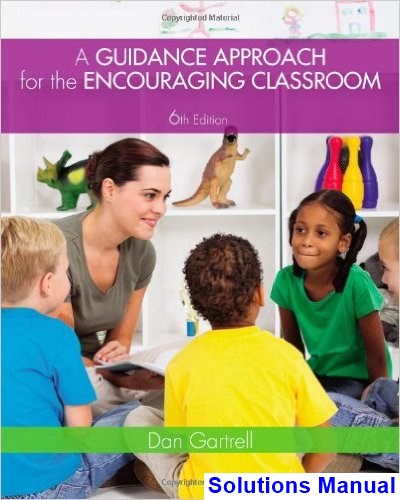
Product Details:
- ISBN-10 : 1133947972
- ISBN-13 : 978-1133947974
- Author: Dan Gartrell
Addressing ages 3 to 8 years, A GUIDANCE APPROACH FOR THE ENCOURAGING CLASSROOM, 6th Edition, functions as a primary reference for professionals or as a resource for classes that address group management, the learning environment, child guidance, child behavior, challenging behavior, conflict management, and peace education topics. Part 1 explores the foundation of guidance in early childhood education. Part 2 focuses on building and organizing an encouraging classroom, and discusses such topics as daily schedules, routines, use of thematic instruction, and the importance of working with parents. Part 3 addresses problem solving and challenging behavior, including a practical illustration of how to use and teach conflict management and information about the “five-finger-formula.” Highlights of the new edition include standards and video integration, expanded coverage of diversity, and information on current brain research. Throughout, this experience-based resource includes real-life anecdotes that allow professionals to make the shift from conventional classroom to developmentally appropriate guidance.
Table of Content:
- Part 1: Foundations of a Guidance Approach
- Preview
- Ch 1: The Guidance Tradition
- Guiding Questions
- Key Concepts
- Introduction
- Beyond Discipline
- Pioneers of the Guidance Tradition
- Mid-20th-Century Influences: The Developmental and Self Psychologists
- The 1980s and Obedience-Based Discipline
- Beyond Discipline to Guidance
- Cultural Responsiveness: Guidance and Cultural Diversity
- Family–Teacher Partnerships: Parent Relations in the Guidance Tradition
- Summary
- Follow-Up Activities
- Recommended Readings
- Ch 2: Child Development, Brain Development, and Guidance
- Guiding Questions
- Key Concepts
- Introduction
- Piaget: A Foundation for the Study of Child Development
- Vygotsky: How the Adult Guides Development
- Erikson: Personal Development and the Classroom
- Gardner’s Multiple Intelligences: Education for Healthy Development
- Emotional Intelligence: Defining the Central Guidance Issue
- Brain Development and Nurturing Relationships
- Cultural Responsiveness: Guidance in a Diverse Society
- Family-Teacher Partnerships: A Climate for Partnerships with Families
- Summary
- Follow-Up Activities
- Recommended Readings
- Ch 3: Mistaken Behavior: Understanding Conflicts, Aggression, and Challenging Behavior
- Guiding Questions
- Key Concepts
- Beyond Misbehavior
- The Concept of Mistaken Behavior
- Relational Patterns: A Model for Social-Emotional Development
- Three Levels of Mistaken Behavior
- Mistaken Behavior, Aggression, and Challenging Behavior
- Cultural Responsiveness: Cultural Factors and Mistaken Behavior
- Family Partnerships: Communicating with Parents about Mistaken Behavior
- Summary
- Follow-Up Activities
- Recommended Readings
- Ch 4: Guidance in the Classroom
- Guiding Questions
- Key Concepts
- Introduction
- A Professional, Not a Technician
- Reducing the Need for Mistaken Behavior
- Taking a Solution Orientation
- Liberation Teaching
- Cultural Responsiveness: The Influence of Poverty
- Family Parnternships: Overcoming Obstacles
- Summary
- Follow-Up Activities
- Recommended Readings
- Part 2: Creating the Encouraging Classroom
- Preview
- Ch 5: Organizing the Encouraging Classroom
- Guiding Questions
- Key Concepts
- Preventing School Anxiety: The Encouraging Classroom
- Developmentally Appropriate Practice Today
- Learning Centers in the Encouraging Classroom
- Building the Classroom for Prosocial Development
- Cultural Responsiveness: Poverty, Guidance, and Linguistic Competence
- Family Partnerships: Encouraging Family Engagement with the Program
- Summary
- Follow-Up Activities
- Recommended Readings
- Ch 6: Managing the Encouraging Classroom
- Guiding Questions
- Key Concepts
- Introduction
- The Daily Program
- The Limits of Large Groups
- Managing Transitions
- Routines in the Encouraging Classroom: A Teacher’s Perspective
- Cultural Responsiveness : The Guidance Approach with Emergent Bilingual Learners
- Family Partnerships: Encouraging and Supporting Classroom Volunteers
- Summary
- Follow-Up Activities
- Recommended Readings
- Ch 7: Leadership Communication with the Group
- Guiding Questions
- Key Concepts
- Introduction
- Establishing Leadership
- Guidelines, Not Rules
- Encouragement, More Than Praise
- Discusing Inclusively
- Class Meetings: Sustaining the Encouraging Classroom
- Encouraging Friendliness
- Cultural Responsiveness: Turning Discriminatory Remarks Made By Children into Learning Experiences
- Family-Teacher Partnerships: Leadership Communication with Parents
- Digital Communication
- Summary
- Follow-Up Activities
- Recommended Readings
- Ch 8: Leadership Communication with the Individual
- Guiding Questions
- Key Concepts
- Introduction
- 1. Careful Listening
- Contact Talk
- The Compliment Sandwich
- Friendly Humor
- Friendly Touch
- Guidance Means Leadership with Other Adults
- Be There for the Children, Be There for Yourself
- Cultural Responsivenes: Fostering Inclusive Social Identities
- Family Partnerships: Leadership Communication in the Parent-Teacher Conference
- Summary
- Follow-Up Activities
- Recommended Readings
- Part 3: Solving Problems in the Encouraging Classroom
- Preview
- Ch 9: Conflict Management
- Guiding Questions
- Key Concepts
- Introduction
- Basics of Conflict Management
- Developmental Considerations in Conflict Management
- The Five-Finger Formula
- Teaching Conflict Management Skills
- Cultural Responsiveness/Family Partnerships: Understanding Four Dimensions of Diversity in Today’s
- Summary
- Follow-Up Activities
- Recommended Readings
- Ch 10: Problem Solving Mistaken Behavior
- Guiding Questions
- Key Concepts
- Introduction
- The Decision to Intervene
- Four Quick Intervention Strategies
- Behaviors Reported by Other Children
- Intervention Strategies When Follow-Up Is Needed
- Why Take the Time?
- Cultural Competence/Family Partnerships
- Summary
- Follow-Up Activities
- Recommended Readings
- Ch 11: Guidance Through Intervention
- Guiding Questions
- Key Concepts
- Introduction
- When Boys Have Conflicts
- When Conflicts Make Intervention Necessary
- Crisis Management Techniques
- Comprehensive Guidance /The Individual Guidance Plan
- When Teachers Feel Anger
- Cultural Competence/Family-Parent Partnerships: When Teachers and Parents Disagree
- Summary
- Follow-Up Activities
- Recommended Readings
- Ch 12: Liberation Teaching: A Guidance Response to Violence in Society
- Guiding Questions
- Key Concepts
- Introduction
- Societal Violence and the Classroom
- Liberation Teaching: The Guidance Response
- The Guidance Response to Bullying
- Liberation Teaching and Related Educational Practices
- Cultural Competence/Family-Teacher Partnerships: Liberation Teaching and Parent Engagement
- Summary
- Follow-Up Activities
- Recommended Readings
- Appendix A: The NAEYC Code of Ethical Conduct
- Appendix B: Technology and Interactive Media as Tools in Early Childhood Programs Serving Children f
- Appendix C: Individual Guidance Plan Worksheet
- Glossary
- References
- Index
- IBC
People Also Search:
guidance approach for the encouraging classroom dan gartrell
guidance approach for the encouraging classroom 6th edition dan gartrell
guidance approach for the encouraging classroom
guidance approach for the encouraging classroom 6th edition dan
guidance approach for the encouraging classroom 6th edition dan download scribd
guidance approach for the encouraging classroom 6th edition dan solution manual download pdf
Instant download after Payment is complete
You may also like…
Calculus and Mathematics
Mathematics for the Trades A Guided Approach 10th Edition Carman Solutions Manual
Solutions Manual
Humanities and Social Sciences
Guidance Approach for the Encouraging Classroom 6th Edition Dan Gartrell Test Bank
Solutions Manual
Research Methods for the Behavioral Sciences 6th Edition Gravetter Solutions Manual
Solutions Manual
Mathematics for the Trades A Guided Approach Canadian 2nd Edition Carman Solutions Manual
Related products
Solutions Manual
Solutions Manual
Solutions Manual
Accounting For Governmental And Nonprofit Entities 18th Edition Reck Solutions Manual
Solutions Manual
Accounting Texts and Cases 13th Edition Anthony Solutions Manual
Solutions Manual
Accounting Business Reporting for Decision Making 6th Edition Birt Solutions Manual
Solutions Manual
Accounting Information Systems 2nd Edition Hurt Solutions Manual





